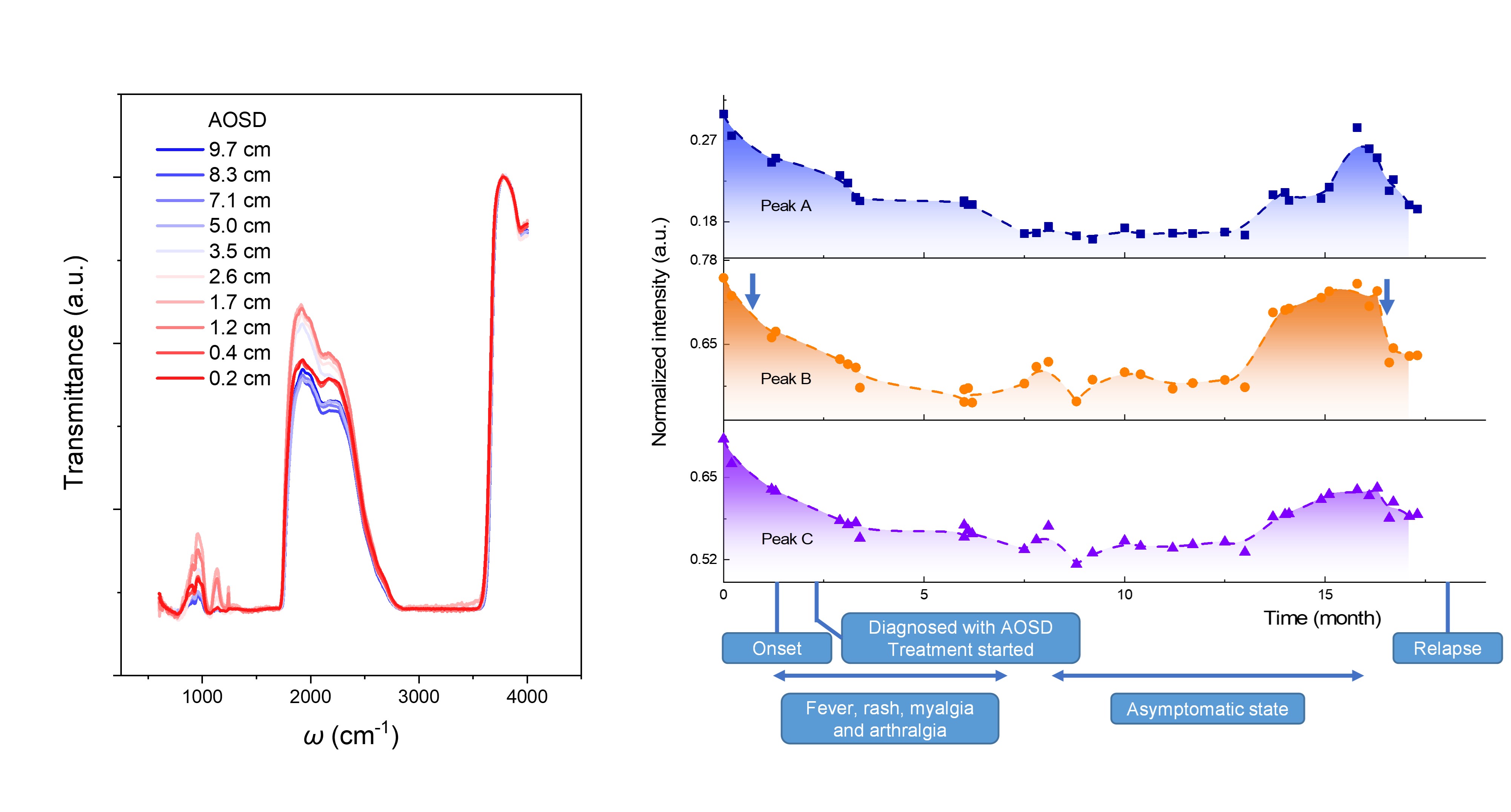Recently, our research group conducted a study on human hair using transmission infrared microspectroscopy. By analyzing the behavior of characteristic transmission peaks in hair, the research team proposed a possible approach for the diagnosis and tracking of adult-onset Still's disease (AOSD). The relevant findings were published online on November 6th, 2023 in Journal of Biomedical Optics under the title "Transmission infrared micro-spectroscopic study of individual human hair". The research findings provide a new approach for tracking and predicting rare diseases using infrared microspectroscopy.
Infrared light has various applications in everyday life, such as infrared transmitters in remote controls and infrared imaging systems. In the context of monitoring human health, infrared light plays a significant role, with common examples including infrared temperature detection devices and small-scale blood oxygen monitors. In medical science research, infrared spectroscopy technology is essential for precise detection and tracking of changes in human substances.
Hair serves as a window reflecting the overall health condition of the human body. Previous studies often used attenuated total reflection mode (ATR) to examine cross-sectional information from sliced hair and obtain absorption information from the hair sections. Nevertheless, this approach is unable to fully capture subsurface information and is marred by sample damage that may occur during the cutting and processing stages. In our study, we utilizes transmission micro-infrared spectroscopy technique to non-destructively, quickly, and comprehensively acquire the infrared spectral information of hair, offering a means to track the health status during the hair growth cycle.

During the research process, we conducted a study on samples of AOSD rare disease and compared them with clinical cases. By comparing the hair spectral results corresponding to different growth stages of AOSD samples and combining finite element simulation, the research team made the following findings: i) AOSD samples exhibited significant infrared transmission characteristic changes compared to healthy samples; ii) The infrared transmission peak intensity of AOSD samples rapidly decreased during the acute phase of the disease; iii) The changes in infrared transmission characteristics of AOSD samples were consistent with the course of the disease (decreased intensity during onset, maintained low values during asymptomatic periods, recovered to high values during recovery, and decreased again upon relapse); iv) Changes in the cortex layer of the hair's main structure dominantly affected the transmission spectrum in numerical simulations, where an increase in size or disorders led to a rapid decrease in peak intensity, while changes in the cuticle and medulla layers only caused slight variations or remained unchanged in the characteristic peaks.
This project was completed through collaboration between Dr. Chen Li and Dr. Xiufang Kong from Zhongshan Hospital affiliated to Fudan University, the research group of Prof. Xiang Yuan from East China Normal University, the research group of Prof. Cheng Zhang from Fudan University, and Dr. Han Xinxin from Peking Union Medical College, Chinese Academy of Medical Science. The work was supported by the National Natural Science Foundation of China, the Science and Technology Commission of Shanghai Municipality, the Shanghai Municipal Education Commission, the Shanghai Education Development Foundation, the Shanghai Medical and Health Development Foundation, the start-up grant and scientific projects of East China Normal University. The related experiments were supported by the State Key Laboratory of Precision Spectroscopy at East China Normal University, the State Key Laboratory of Surface Physics and Institute for Nanoelectronic Devices and Quantum Computing at Fudan University, and the State Key Laboratory of Complex Severe and Rare Diseases at Peking Union Medical College, Chinese Academy of Medical Science. The paper was affiliated with Zhongshan Hospital as the first institution and the East China Normal University as the second institution. Prof. Xiang Yuan is the corresponding author of this paper, and Yuhan Du, a master's student of East China Normal University, is the co-first author.
More Information: J. Biomed. Opt. 28(11) 116501. DOI: 10.1117/1.JBO.28.11.116501

